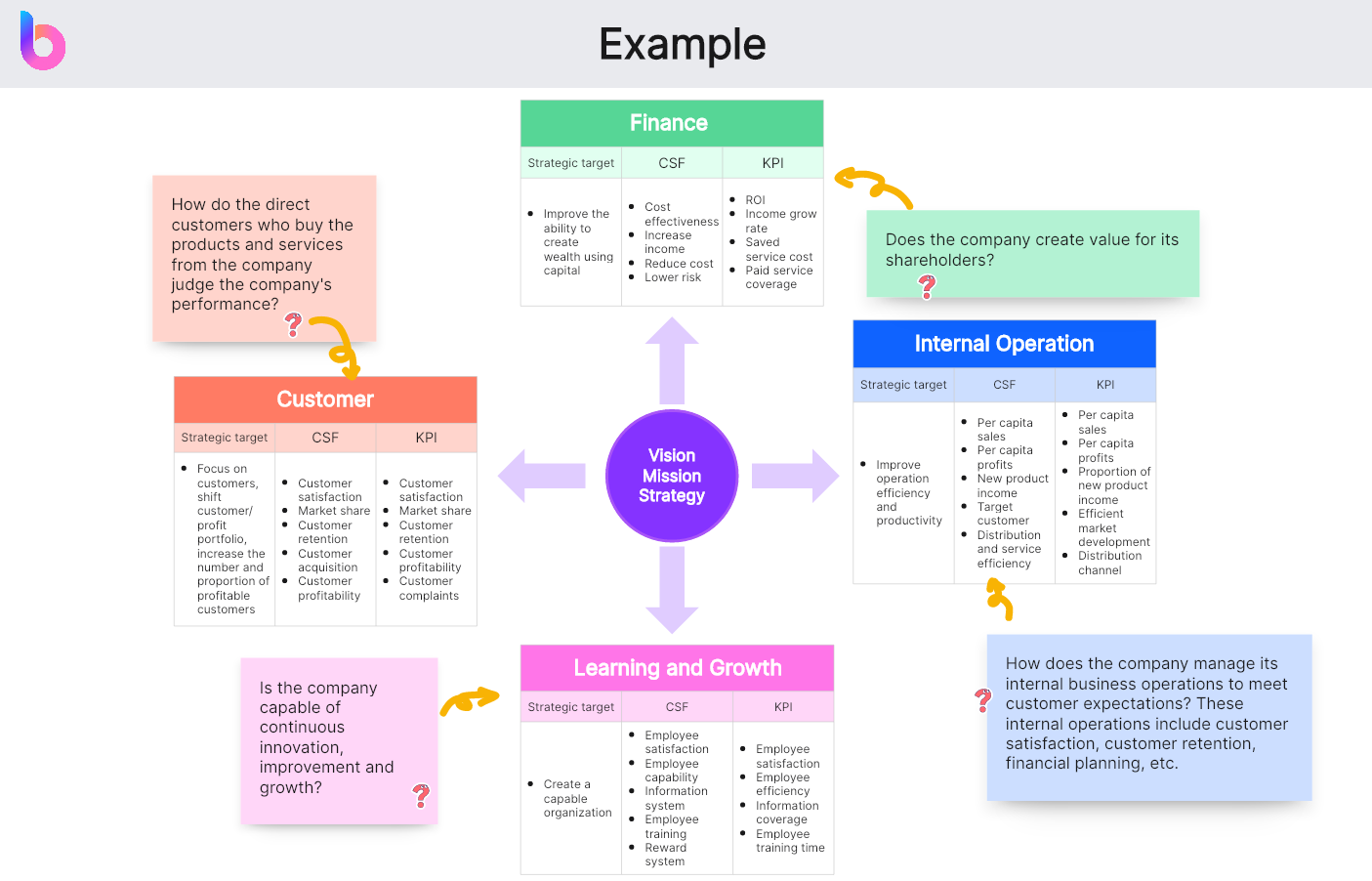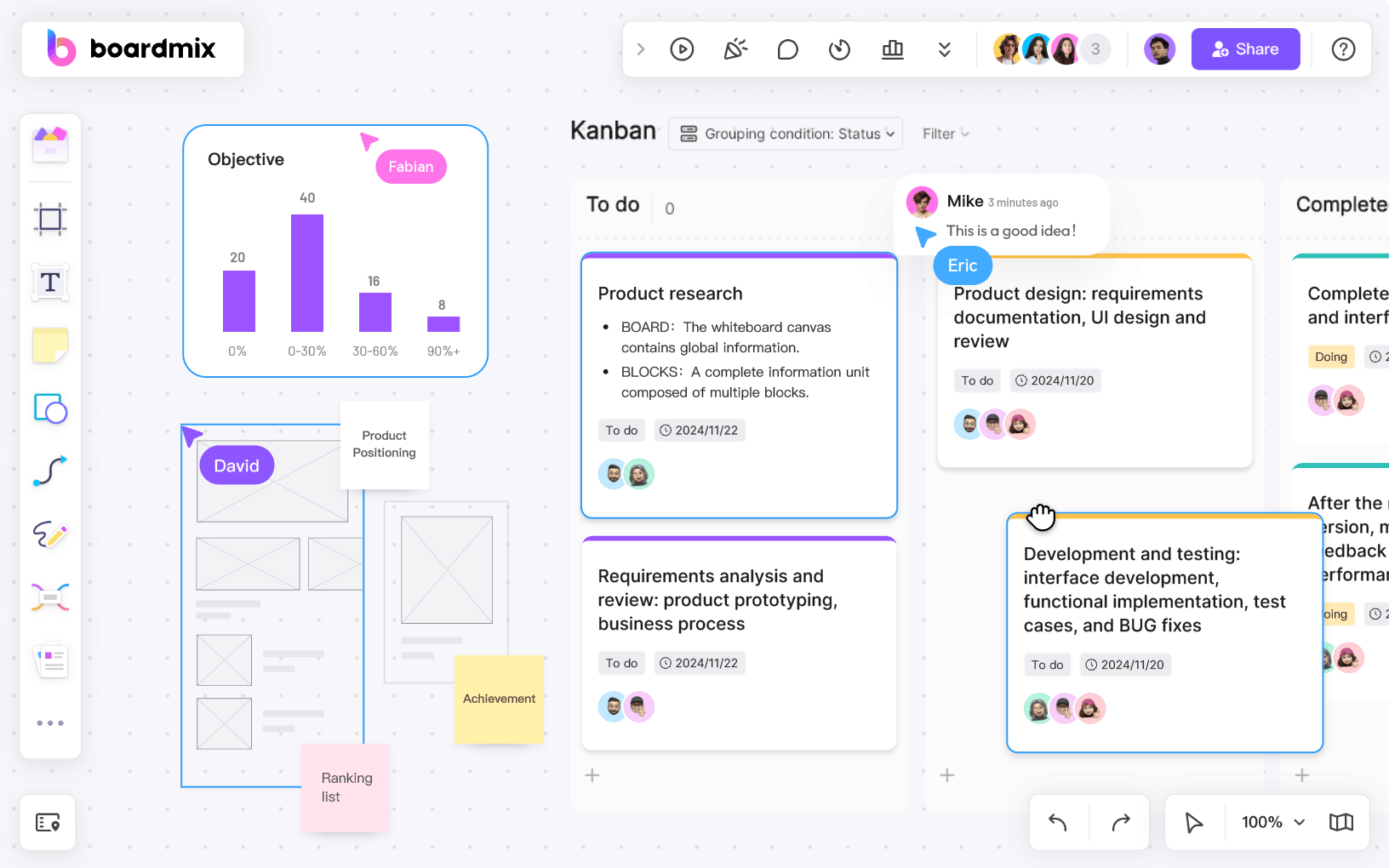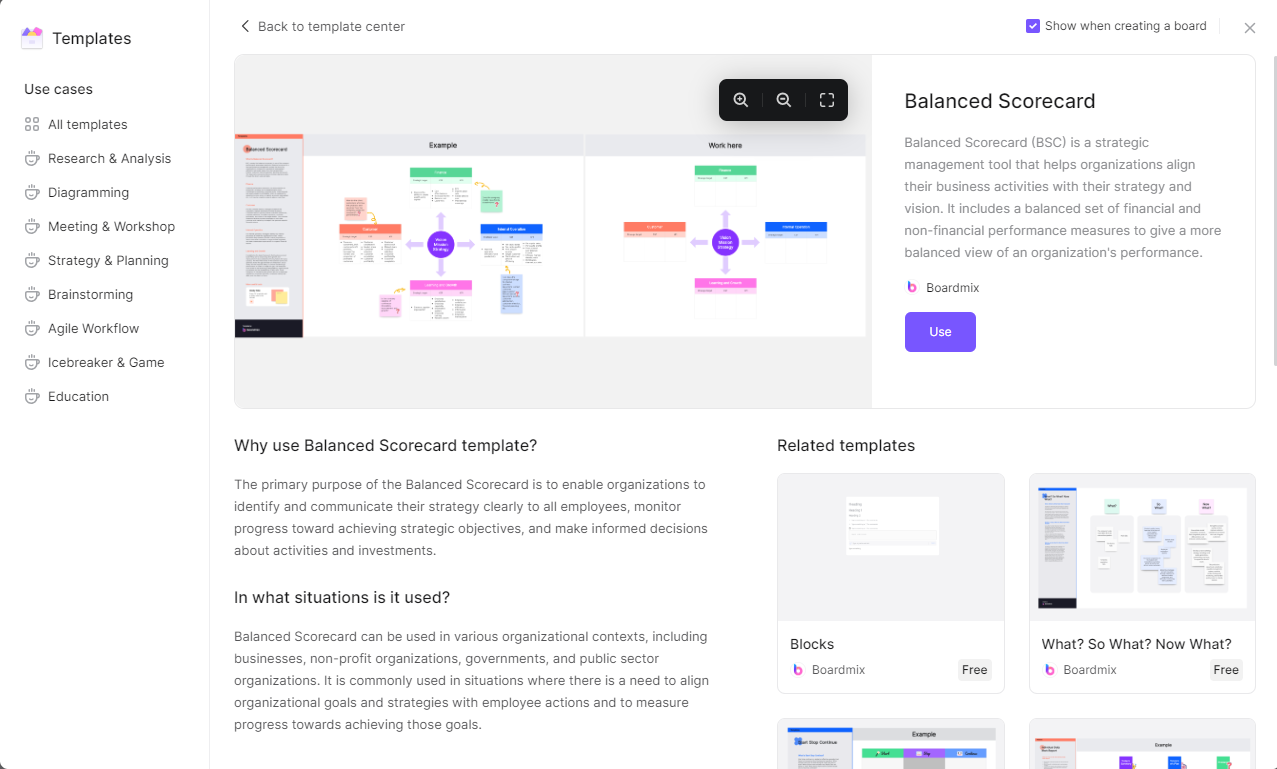In the dynamic world of business, effective strategy planning and execution play an essential role in an organization's success. The Balanced Scorecard (BSC) is a performance measurement framework that adds strategic non-financial performance measures to traditional financial metrics. It offers a balanced view of an organization's performance, helping it to align its activities with its vision and strategy.
What Is a Balanced Scorecard
The Balanced Scorecard, first introduced by Drs. Robert Kaplan and David Norton in the early 1990s, is a strategic planning and management system used by businesses, governments, and nonprofits worldwide. It helps these organizations align business activities to their strategy, enhance internal and external communications, and monitor organizational performance against strategic goals.

The BSC is not just a measurement system but a management system that can motivate breakthrough improvements in such critical areas as product, process, customer, and market development.
What Are the 4 Perspectives of a Balanced Scorecard
A key component of the BSC methodology is the balance provided across four distinct perspectives. This balance allows organizations to avoid over-concentrating on one single aspect at the expense of others:
- Financial Perspective: This focuses on financial performance indicators such as revenue growth, cost management, profitability, and return on investment.
- Customer Perspective: This considers measures of customer satisfaction, customer retention, acquisition, market share in targeted segments, etc.
- Internal Process Perspective: It examines how well the business is running and whether its products/services conform to customer requirements. Key performance indicators include process efficiency, quality control, productivity, etc.
- Learning and Growth Perspective: This perspective identifies measures to drive learning and growth within the organization such as employee satisfaction, employee retention, skill gaps, etc.
How Does a Balanced Scorecard Measure
The Balanced Scorecard operates as a strategic management tool to quantify and track progress towards the achievement of strategic objectives. It measures the organization's performance by focusing on four core perspectives: financial, customer, internal processes, and learning and growth.
In each of these perspectives, a three-pronged approach is followed:
Objectives: Objectives are the clearly defined goals set out by the organization across all four perspectives of the Balanced Scorecard. Each objective provides a specific direction and clarifies what the organization aims to accomplish.
Measures or Key Performance Indicators (KPIs): Each objective has associated KPIs or measures that help gauge the performance against the set goals. These metrics provide quantifiable deliverables that serve as markers for tracking progress.
Targets: Targets are established for each measure, setting a desired level of performance. Targets add value to measures and guide how an improvement in performance can be achieved.
Initiatives: These are action plans designed to meet targets and ultimately achieve the objectives. Initiatives provide the pathway to bridge the gap between current performance and desired targets.
The Balanced Scorecard, therefore, operates by cascading objectives, measures, targets, and initiatives across all four dimensions of an organization's operation, providing a comprehensive view of its performance.
Benefits of a Balanced Scorecard
Implementing a Balanced Scorecard provides several compelling benefits that contribute towards enhancing organizational efficiency and effectiveness:
- Improved Strategy Communication and Execution: By creating a straightforward visual representation of strategic objectives, BSC enhances the understanding and communication of the organization’s strategy. This clear strategy communication ensures better execution of strategic goals across all organizational levels.
- Better Alignment of Projects and Initiatives: The BSC framework aligns projects and initiatives with strategic objectives, ensuring resources are effectively allocated towards achieving these objectives.
- Enhanced Strategic Feedback and Learning: BSC provides a continuous feedback loop on strategic performance allowing an organization to adapt to internal changes and external market shifts, fostering a culture of continuous learning and improvement.
- Balanced View of Organizational Performance: By considering financial and non-financial measures, BSC offers a more balanced view of the organization’s health and performance.
- Increased Focus on Strategy and Results: The BSC shifts the organization’s focus from operational measures to strategic ones, driving all activities towards achieving strategic goals.
In conclusion, a Balanced Scorecard serves as an efficient strategic management system that facilitates a structured approach to strategy execution, performance measurement, alignment of activities, and enhancement of organizational focus on delivering results.
Explain the Balanced Scorecard with an Example
Understanding a strategic framework such as the Balanced Scorecard (BSC) becomes easier when we associate it with an actual example. Let's imagine a manufacturing company — "XYZ Manufacturing" — has adopted the Balanced Scorecard framework to align their operations with strategic goals.
Financial Perspective: The primary financial goal for XYZ Manufacturing might be to increase their return on investment (ROI). To measure this, they can set Key Performance Indicators (KPIs) like net profit margin, operating income, and revenue growth rate. A potential target could be to achieve a 10% increase in ROI within the next fiscal year, which would drive initiatives like cost reduction measures or efforts to boost sales.
Customer Perspective: For XYZ Manufacturing, an important customer-focused objective might be improving customer satisfaction. The company could track this through measures like customer satisfaction scores, number of customer complaints, and repeat business rate. If they aim to improve customer satisfaction scores by 20% in the next year, initiatives could include a customer feedback system or an improved after-sales service process.
Internal Process Perspective: XYZ Manufacturing might aim to reduce production errors to enhance product quality. This could be measured using KPIs like error rates, production yield, and quality scores. With a target of reducing production errors by 15% within six months, XYZ could implement initiatives such as worker training programs or an investment in better-quality raw materials.
Learning and Growth Perspective: In terms of learning and growth, XYZ Manufacturing could set an objective to upskill their workforce. They can gauge progress through measures like employee skills assessment scores or training hours per employee. A potential target might be to increase the average skills score by 30% within a year. This might prompt initiatives like developing a comprehensive employee training program or implementing a mentorship scheme.

In this way, XYZ Manufacturing has linked their strategic goals across various organizational aspects using the BSC framework, ensuring they don't over-focus on any single area. Regular reviews of their scorecard would enable them to monitor progress and adapt strategies as required.
Ultimately, the BSC aids XYZ Manufacturing in maintaining a clear vision of organizational objectives, measuring performance against these objectives, and executing well-defined initiatives that drive them towards achieving these goals.
Leverage the Balanced Scorecard Template
Efficient strategic planning and tracking are key to achieving business success, and the Balanced Scorecard (BSC) provides a robust framework for this purpose. But creating a BSC from scratch can be time-consuming and complex. This is where the Boardmix Balanced Scorecard Template comes into play, acting as a comprehensive tool that simplifies the creation and management of a BSC. Here, we'll delve into how to leverage this handy template effectively.
Understanding Boardmix Balanced Scorecard Template
Boardmix is an easy-to-use whiteboard tool that helps businesses manage their projects and tasks with minimal hassle. The Balanced Scorecard template it offers is designed in a way that caters to all four perspectives of a BSC — Financial, Customer, Internal Process, and Learning and Growth.

Each of these perspectives has designated sections in the template for outlining objectives, KPIs, targets, and initiatives — streamlining the process of planning and tracking these crucial elements.
How to Leverage the Boardmix Balanced Scorecard Template
- Define Clear Objectives: Start by outlining clear objectives in each of the four perspectives. Remember, these should be high-level goals that align with your strategic plan.
- Identify Relevant KPIs: In line with each objective, identify appropriate KPIs that will allow you to measure performance. Be sure to choose metrics that are relevant, quantifiable, and realistic.
- Set Targets: Determine specific targets for each KPI to set a clear benchmark for success. These targets should be ambitious yet achievable, pushing your team towards continuous improvement.
- Outline Initiatives: Outline key initiatives or actions that need to be taken to achieve each objective. These should be strategic, actionable steps that guide your team towards the desired outcome.
- Monitor and Review: The Boardmix Balanced Scorecard Template is not just for planning — it's also an effective tracking tool. Regularly review your scorecard to monitor progress against objectives, making necessary adjustments as you go.
Benefits of Using the Boardmix Balanced Scorecard Template
- Simplicity: The Boardmix template simplifies the process of creating a BSC by providing a clear and organized structure.
- Alignment: It aids in aligning your business activities with the strategic vision, ensuring all aspects of your organization are moving in the same direction.
- Focus: The template ensures focus remains on strategic goals rather than getting caught up in day-to-day operations.
- Performance Monitoring: With this template, businesses can easily track progress towards their strategic objectives and make timely adjustments where needed.
The Boardmix Balanced Scorecard template offers a practical solution for businesses aiming to implement a BSC in their strategic planning and management processes. By leveraging this template effectively, businesses can ensure they remain focused on their strategic objectives and consistently track their progress.
Tips and Tricks: Utilizing the Balanced Scorecard Effectively
A Balanced Scorecard (BSC) is a powerful tool for aligning business activities to vision and strategy, improving internal and external communication, and monitoring performance against strategic goals. However, simply having a BSC in place doesn't guarantee success. To unlock its full potential, it needs to be utilized effectively. Here are some essential tips and tricks for optimizing the use of your BSC.
- Align the Scorecard with Your Strategy
The BSC is meant to translate your strategic plan into actionable objectives, measures, targets, and initiatives. Make sure your scorecard aligns seamlessly with your strategic plan. Each element of the BSC should clearly reflect your organization's goals and mission.
- Set Clear Objectives and Key Performance Indicators
Clearly define the objectives under each perspective of your BSC. Each objective should be precise, measurable, achievable, relevant, and time-bound (SMART). Similarly, choose Key Performance Indicators (KPIs) that accurately measure progress toward the objectives. KPIs should be quantifiable, relevant to the objectives, and straightforward to understand and track.
- Use Balanced Measures
The principle of a BSC lies in its balanced approach. While financial measures are crucial, don't overlook the other perspectives—customer, internal process, learning, and growth. These non-financial measures provide early warning signals for future performance. Also, strive for a mix of leading (predictive) and lagging (outcome) indicators for a well-rounded view of performance.
- Keep it Simple
Avoid over-complication. Your BSC should not be crowded with numerous objectives and KPIs. It should be simple, concise, and focused. Too many measures can dilute focus and make it difficult to manage.
- Communicate the Scorecard Throughout Your Organization
Share your BSC widely within your organization. Every team member should understand what the scorecard means and how their role contributes to the broader objectives. Open communication promotes engagement and accountability.
- Review and Revise Regularly
Your BSC is not a static document. Regular reviews are essential to ensure that it remains aligned with your evolving strategy and objectives. Make revisions as needed and continually check that your measures still provide valuable insight into performance.
- Use Appropriate Tools
Utilize software tools or templates that can help manage your BSC efficiently. These tools, like Boardmix, can simplify the process of designing, implementing, and tracking your scorecard.
The Balanced Scorecard can be a game-changer for your organization's strategic management process if utilized effectively. These tips provide a roadmap to ensure your BSC becomes a truly valuable tool in achieving your organizational goals.













